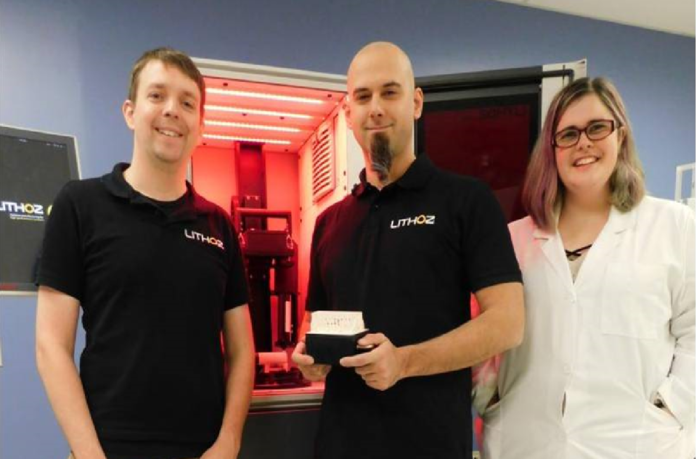A lot is going on in the International Space Station (ISS). The team at ISS has been working with several companies on various experimental programs to develop and implement a technique of 3D printing heart tissues and in the long run, even organs for transplantation.
In 2019, one of the companies that collaborated with this team was nScrypt, an American company that developed a 3D Biofabrication Facility bioprinter. Recently, and in collaboration with Techshot Inc., they announced the successfully 3D printing of a large volume of human heart cells aboard the International Space Station (ISS) U.S. National Laboratory.
Furthermore, we have learned today, that in addition to human cells and bioinks for BFF, new components of Techshot’s tissue conditioning system were also tested during this mission. The components have been manufactured by Lithoz America, LLC that develops and provides high-performance and bioresorbable ceramics produced by the patented LCM technology. While leveraging the lithography-based ceramic manufacturing (LCM), they produced the components on a high resolution CeraFab printer.
The Troy that specializes in additive manufacturing systems for advanced ceramics partnered with Techshot to develop ceramic fluid manifolds used inside bioreactors. The bioreactors provide nutrients to living materials printed in space by BFF.
With the goal of replacing the prototype polymer manifolds tested this summer, the Lithoz ceramic manifolds are currently being tested aboard the ISS for their biocompatibility, precision, durability and overall fluid flow properties.
So far, the team reports a positive feedback regarding the use of ceramic additive manufacturing in the production of a compact device. The technique would have allowed a level of bio-compatibility not achievable with printable polymers. Indeed, Techshot engineers were able to interface the larger bio-structures with the Lithoz-printed ceramic manifolds.
If ceramic 3D printing has been controversial for a long time, this use case shows that its use is worthwhile in the aerospace industry. For now, the next stage will consist in the optimized integration of these components and longer culturing of the printed biological materials.
Techshot and Lithoz engineers and scientists worked together to optimize the design and the
manufacturing processes required to make it. “It’s been an absolute pleasure working with Lithoz,” said Techshot Senior Scientist Dr. Carlos Chang. “Their expertise in ceramic processing really made these parts happen.” “The success of ceramic additive manufacturing depends on working together with design, materials, and printing,” said Lithoz Vice President Shawn Allan. “Design for Ceramic Additive Manufacturing principles were used along with print parameter control to achieve Techshot’s complex fluid-handling design with the confidence needed to use the components on ISS.”
Remember, you can post free of charge job opportunities in the AM Industry on 3D ADEPT Media or look for a job via our job board. Make sure to follow us on our social networks and subscribe to our weekly newsletter : Facebook, Twitter, LinkedIn & Instagram ! If you want to be featured in the next issue of our digital magazine or if you hear a story that needs to be heard, make sure to send it to contact@3dadept.com.


